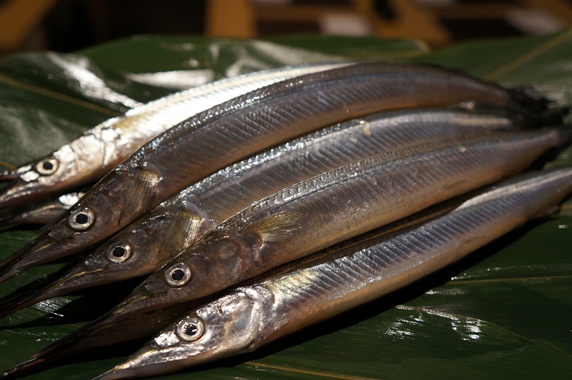
Keeping it simple and uncomplicated is the rule that Kazunari Noda, executive sous chef of Kumo, adopts for serving the sayori, a sleek, silver fish also known as the Japanese halfbeak or needlefish because of its long and thin protruding lower jaw that extends like a needle. “Because of its very clean and fresh taste, the sayori is commonly served as sushi or sashimi, with just a little vinegar or soya sauce to accentuate its flavour,” says Noda. “If cooking it in robatayaki, just a quick grill, along with a squeeze of lemon or sudachi, a Japanese citrus, is enough.”
Filleting the sayori, you can further understand why Noda emphasises some restraint in handling the fish: its flesh is delicate and translucent, bringing to mind the slices of fugu, the Japanese puffer fish. Usually caught off the shores of Japan’s Mie, Ishikawa, Hyogo and Hiroshima prefectures, the fish feed mainly on algae and plankton, and are often found swimming in schools just below the water surface.
When confronted by predators like tuna and bonito, they evade by skimming above the water. They can also grow up to a length of 30cm, and, with their peculiar long ‘beaks’, can lend the impression of a miniature swordfish. The best seasons to enjoy sayori are spring (when the fish are about to spawn) and autumn (when they are smaller in size, but offer a lighter, more elegant flavour).
“You wouldn’t normally find sayori in cheaper places like izakayas,” notes Noda. “It’s expensive and usually served in the finer restaurants or sushi bars.” Noda, who specialises in kaiseki— a multicourse Japanese meal with an emphasis on seasonal ingredients—is adept at presenting the sayori in various forms while still respecting the fish’s delicate texture. For his Sayori Tempura covered with Edamame, he coats the fish in a thin layer of flour, egg white and finely diced edamame before deep-drying it for 40 seconds to achieve a light, crisp green crust.
Excerpt from the November issue of epicure.
